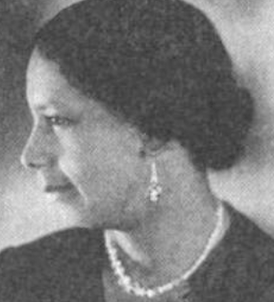Lillie Mae Carroll Jackson facts for kids
Quick facts for kids
Lillie May Carroll Jackson
|
|
|---|---|

Lillie M. Jackson, from a 1936 publication
|
|
| Born | May 25, 1889 |
| Died | July 5, 1975 (aged 86) |
| Nationality | American |
| Known for | civil rights activist, organizer of the Baltimore Branch of the NAACP |
Lillie May Carroll Jackson (born May 25, 1889 – died July 5, 1975) was a very important leader in the civil rights movement. She helped start the Baltimore branch of the NAACP. People often called her "Dr. Lillie" or "Ma Jackson." She was also known as the "mother of the civil rights movement."
Lillie May Carroll Jackson was one of the first to use non-violent protests. This peaceful way of fighting for rights was later used by leaders like Martin Luther King Jr. during the Civil Rights Movement.
Contents
Early Life and Family
Lillie May Carroll Jackson was born in Baltimore, Maryland. She was the seventh child of Charles Henry Carroll, a minister, and Amanda Bowen Carroll. After finishing high school in 1909, Lillie became a second-grade teacher. She taught at the Biddle Street School.
Meeting Her Husband
Lillie loved to sing in her church choir. One day, she met Keiffer Albert Jackson, who showed religious films. He asked her to sing a song called "The Holy City." Years later, in 1910, they got married.
After they married, Lillie and Keiffer traveled together. She would sing while he showed his silent films. They settled in Baltimore when their first child, Virginia, was born. They later had two more daughters, Juanita Elizabeth and Marion, and a son, Bowen Keiffer.
A Family of Activists
In 1918, Lillie had a serious surgery. It left one side of her face permanently changed. Because of this, most photos of her were taken from her left side.
Lillie May Carroll Jackson truly was the "mother of the civil rights movement." Her daughter, Juanita, became the first African-American woman lawyer in Maryland. Juanita married Clarence Mitchell Jr. in 1938. He was a very important lobbyist for the NAACP in Washington D.C. from 1950 to 1978. He was even called the "101st U.S. Senator."
Clarence's brother, Parren Mitchell, became the first African-American congressman from Maryland. Lillie's family continued to work for civil rights for many years.
Fighting for Civil Rights
Lillie May Carroll Jackson owned rental properties, which gave her time to work for her community. In the early 1930s, she started the City-Wide Young Peoples Forum with her daughter Juanita. This group worked to end racial segregation.
The "Buy Where You Can Work" Campaign
One of their first actions was the "Buy Where You Can Work" campaign in 1931. Lillie and Juanita encouraged African-American people in Baltimore to shop only at stores where they could also get jobs. They boycotted businesses that did not hire Black people. This campaign was very successful and inspired similar protests in other cities.
Joining the NAACP
A lawyer named Charles Hamilton Houston once told the forum that they could fight Jim Crow laws in Maryland through the courts. Soon after, Lillie joined the NAACP. This began her 35-year journey with the organization.
In 1935, she became the president of the Baltimore NAACP branch. She held this position until she retired in 1970. In 1934, Thurgood Marshall began working for the Baltimore NAACP. The next year, he won a major case, Murray v. Pearson. This case helped remove racial barriers at the University of Maryland School of Law. In 1946, Lillie started the Maryland state conference of the NAACP. She also joined the National Board of Directors in 1948.
Changing Baltimore
In 1938, the NAACP won another important case. A court ruled that all teachers in Baltimore city schools should receive equal pay, regardless of their race. In 1942, Lillie started a movement to register Black voters. This helped change politics in the city.
Lillie was also key in making Baltimore the first Southern city to integrate its schools. This happened after the famous Brown v. Board of Education decision. In 1958, Baltimore passed a law against unfair hiring practices. Lillie was so powerful in Maryland politics that Governor Theodore McKeldin once said, "I'd rather have the devil after me than Mrs. Jackson. Give her what she wants."
Thanks to her hard work, the Baltimore NAACP became the largest branch in the United States. It had a peak membership of 17,600 people.
Death and Legacy
Lillie May Carroll Jackson passed away from a heart attack on July 5, 1975. She was buried at Mount Auburn Cemetery in Baltimore.
In her will, Lillie asked that her home at 1320 Eutaw Place in Baltimore be turned into a museum. This museum is special because it is the only one named after a woman and the only civil rights museum in Maryland. It holds many important items from the civil rights movement, like documents and photos. One famous photo showed Lillie with Rosa Parks.
The museum opened in 1976. Later, in 1997, Morgan State University took over caring for the museum's items. The museum is currently being prepared to reopen in the future.
In 1986, Lillie May Carroll Jackson was honored by being added to the Maryland Women's Hall of Fame.
Images for kids


